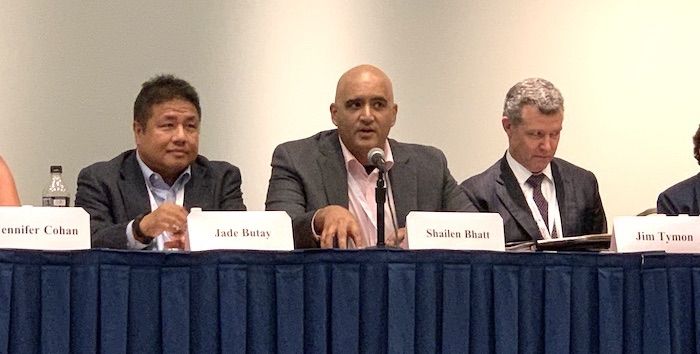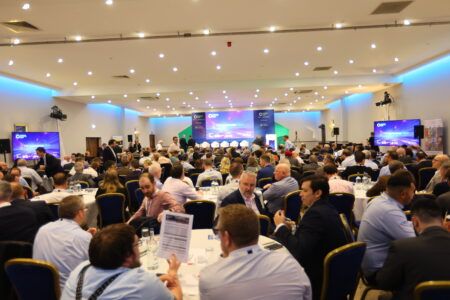At the ITS America Annual Meeting (June 4-7), leaders convened to share their knowledge at the State Department of Transportation (DOT) roundtable.
The first half of the discussion focused on mobility-on-demand and how it can successfully be implemented into towns and cities.
“For the past 100 years, transportation has traditionally revolved around roads and bridges, and how vehicles interact with them,” said Shailen Bhatt, president of ITS America. “The Mobility On Demand Alliance is our attempt to say that there are a lot of different layers in mobility and that now, there are many different players around the table.”
“There’s a sense of urgency and it needs to be responded to quickly,” said Jennifer Cohan, secretary at the Delaware Department of Transportation (DOT). “Mobility-on-demand is a leap of faith, but we shouldn’t be afraid to take it.”
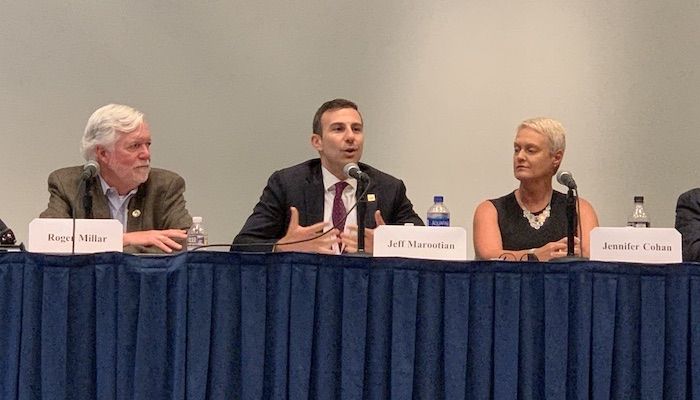
“In order to facilitate mobility-on-demand and Mobility-as-a-Service (MaaS) in any city or state, we need to re-imagine our infrastructure and how it functions,” said Jeff Marootian (above), director of the District [of Columbia] DOT. “In my state, we’re currently testing autonomous vehicles, experimenting with scooter- and bike-share schemes; and we’ve converted some parking spots to pick-up/drop-off lanes in order to set up the landscape for mobility-on-demand in the future.”
Laurie Berman (below), director of the California DOT (Caltrans) agreed. “Part of the mobility-on-demand challenge is trying to make people try something different and making these new travel modes more attractive,” she said.
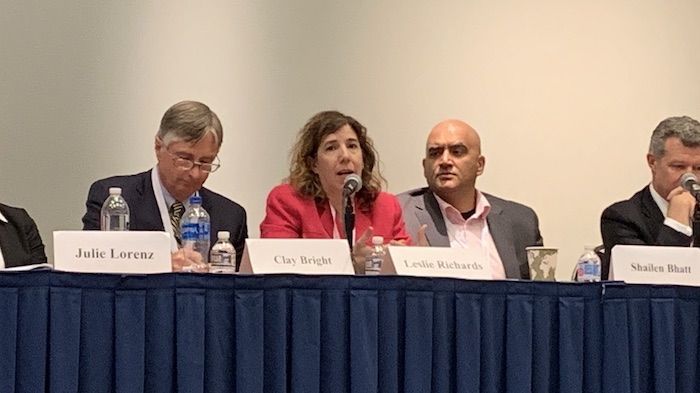
Jim Tymon added: “Sate DOTs are trying to fight the misconception that they just want to build new roads. They have become a lot more multimodal. We need to be able to share how and why they’re more multimodal.”
“The disruption is refreshing,” said James Barbaresso, senior vice president of construction engineering giant HNBT, the sponsor of the roundtable. “It’s user-driven and user-focused. Moving forward, we must figure out how the right sized fleet of different vehicles can be developed to serve different types of users across a certain area in order to ensure accessibility at all times.”
The second part of the of the roundtable meeting was centered around technology and DOTs’ success stories of its implementation.
“Technology is a fundamental tool in terms of how we manage congestion and other transportation issues,” said Bhatt.
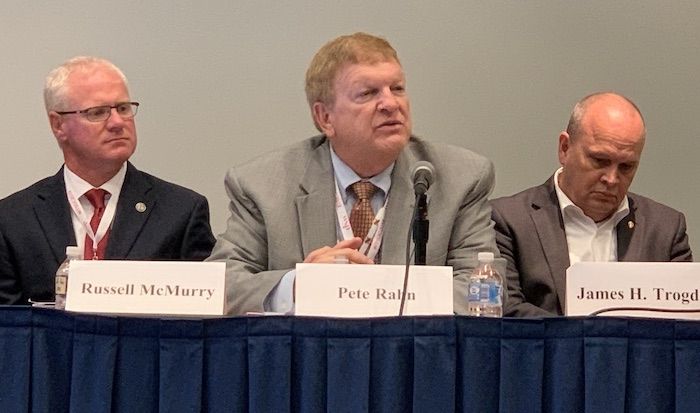
“It took us two years to get legislation for drone use,” said Pete Rahn (above), secretary at Maryland DOT. “Now, thanks to drones, we are able to clear crashes on the I-95 in just 15 minutes, and we can restore traffic in 45mins. That is a phenomenal achievement for this road, which used to take hours to clear. The technologies that are available are so exciting, but we sometimes have a hard time keeping up with the knowledge of it, as well as deploying it.”
“We found that asking for full passing in autonomous vehicle legislation was too much,” said Leslie Richards, secretary at the Pennsylvania DOT. “So now we’re focusing on testing autonomous vehicles around workzones and platooning, and getting that legislation passed.”
The subject of trust was also explored.
“It’s a challenge to gain the public’s acceptance,” said Diane Gutierrez-Scaccetti, commissioner at the New Jersey DOT. “How can we educate the nay-sayers? How do we communicate why we’re making changes and what the benefits are?”
“It’s a neat time to be working in transportation. We’ve entered a time where the ‘i’ in ITS needs to reach its full potential,” said Russell McMurry, commissioner at Georgia DOT. “We’re getting more data than ever that can be coupled with connected and autonomous vehicles. And this data can be merged with artificial intelligence.
“So, how can we make our transit services more efficient using this data? The technology is approaching us very quickly, but how soon people will accept it is a different matter.”


